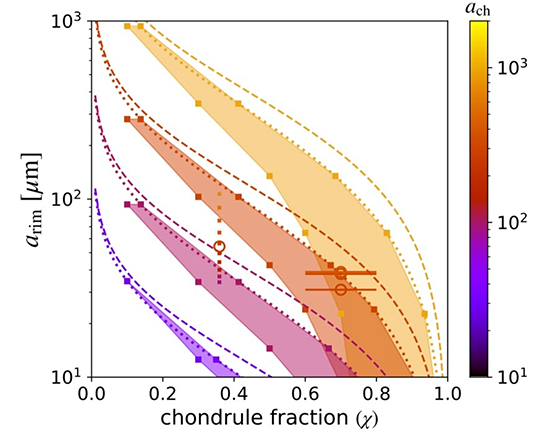研究成果藝廊 > 理論天文物理理論天文物理
(Theory)
研究成果藝廊
理論天文物理理論天文物理 (Theory)
| Meteorites as a clue to the accretion in the Solar System |
|
圖片來源: Matsumoto et al., 2019

Comparison between the numerical estimation of the rim thickness (hatched regions) and observed thicknesses of fine-grained rims (open circles) on the rim thickness and chondrule fraction plane. The dotted line is the analytical estimation for a simple case, and the dashed line is given by the dotted line with the observation bias.
|
| Meteorites give us insights into the formation of the solar system, which is a long-standing problem. The internal structures of meteorites reflect the accretion and evolution histories from dust to asteroids. Most meteorites hold spherical dust bodies, which are called chondrules. Chondrules have rims, which would be formed via the accretion of ~ microns or smaller dust grains. We considered that these rims are formed via the accretion of dust aggregates, which are formed via collisions of small grains, since small grains quickly collide (Matsumoto et al., 2019). We have estimated the rim thickness. The estimated thicknesses agree with the observed thicknesses of fine-grained rims. We suggest that these rims are formed via accretion of dust aggregates. |
